Historic house re stuccoed
Cleveland Park Historic District
Washington, DC
Here's how we did it:
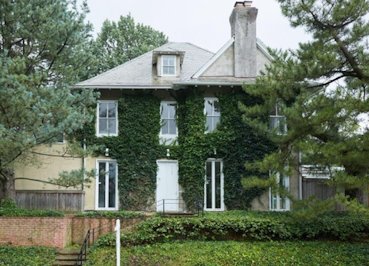
BEFORE: 1910 lath and stucco house. Front is covered with ivy, and most of the paint had peeled off.
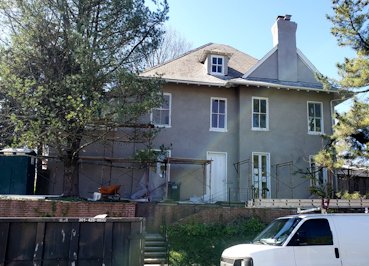
AFTER: Major renovation, repairs, window replacement, etc. Old stucco is recoated. Finish coat is REAL portland cement stucco with a color.

Original galvanized metal lath is still in good shape. Most of the stucco failure in this neighborhood is due to lath made for interior use has rotted.
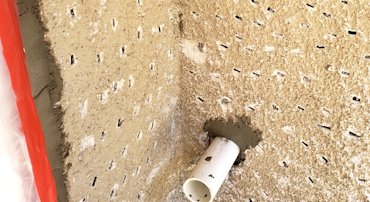
Walls are chipped every 3 or 4 inches or so for a good bond. Large holes and patches are filled first.
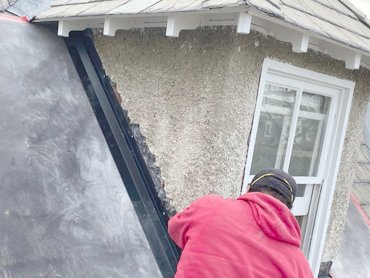
Stucco is cut off at base of dormers and chimneys and new counter flashing put on.
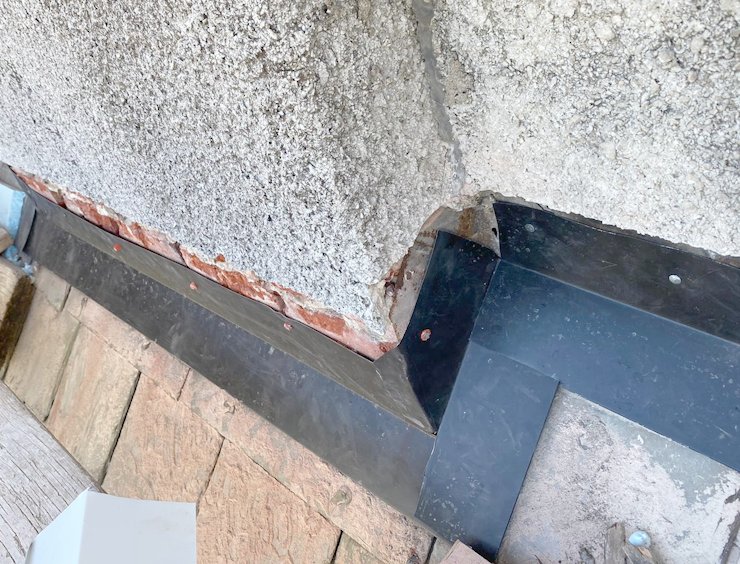
Chimneys and other roof intersections are cut back and new flashing put on.

Old steel flashing over windows is also rusty and replaced.
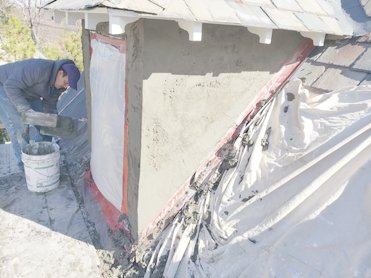
Flashing and roof taped off and covered. Flashing is patched with new lath and mortar, then the whole
wall coated with a new basecoat.
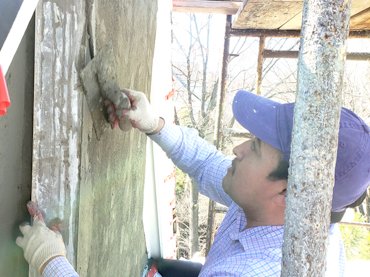
A method for straightening the outside corner without a corner bead. A rod is held up and packed with mortar.
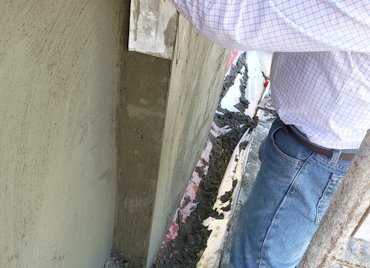
Wall is straight.
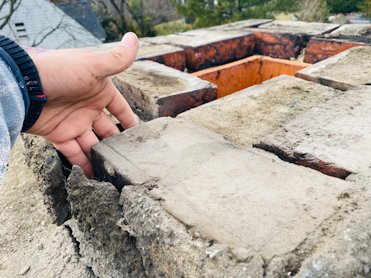
Badly deteriored chimney. The mortar has pretty much dissolved.

The gaps and holes are first packed with super mortar. Mortar is mixed with half acrylic and half water.
The result is mortar that is well bonded and double the strength.
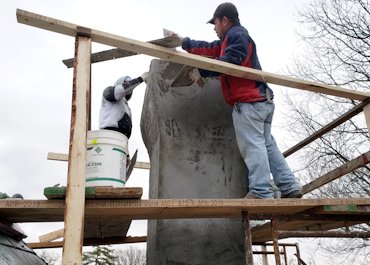
Chimney is then recoated with our same super mortar and rodded off, ready for the finish coat.
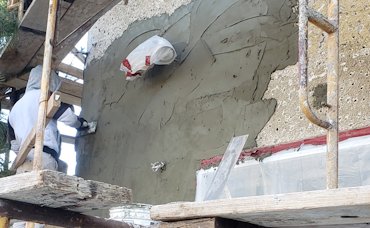
Existing old stucco is chipped and recoated.

Brown coat on house.
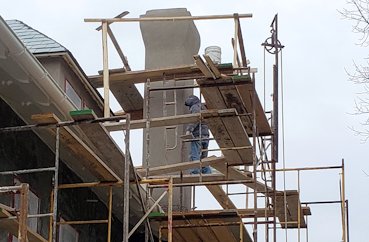
Chimney look any better ? Color finish is put on chimneys and dormers first.
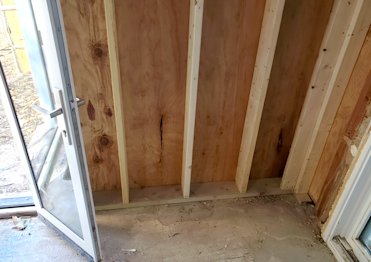
Rotted framing damaged by roof leaks is replaced with 2 by 6 framing.
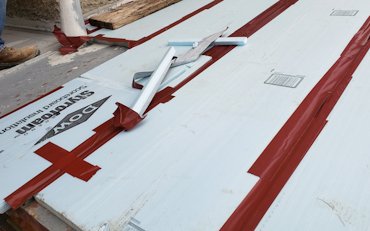
Metal roofs are protected with styrofoam. One good use for styrofoam.
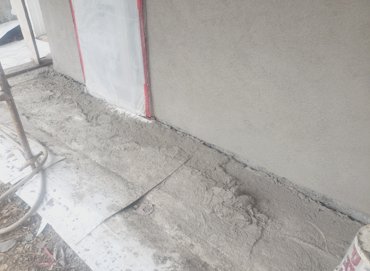
Sheets of correx, corrugated plastic, simplify clean up.
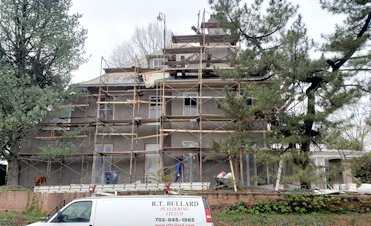
Finished house.




















